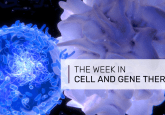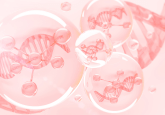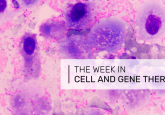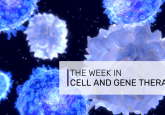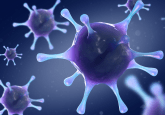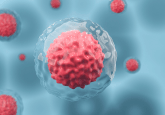Top 5 grants in regenerative medicine: September 2021
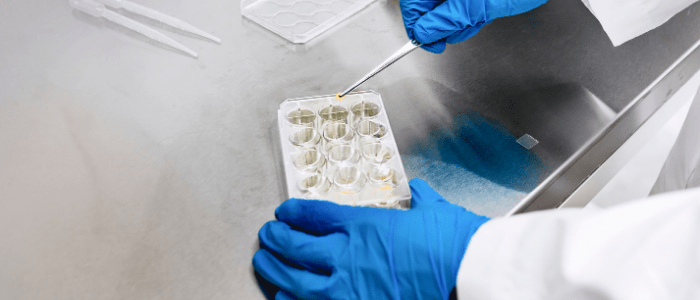
This month’s top grants in regenerative medicine, sourced from Dimensions, includes projects on: recovery of the aged brain after acquired injury; mimicking the dynamic and complex ECM: designing bioprinted immune-instructive hydrogels; regenerating human retina from resuscitated cadaveric eyes; urinary bladder bioprinting for fully autologous transplantation; and using human induced pluripotent stem cells (hiPSCs) to improve the way human diseases are studied.
Check out this month’s top grants in regenerative medicine:
- Recovery of the aged brain after acquired injury
- Mimicking the dynamic and complex ECM: designing bioprinted immune-instructive hydrogels
- Regenerating human retina from resuscitated cadaveric eyes
- Urinary bladder bioprinting for fully autologous transplantation
- Using hiPSCs to improve the way human diseases are studied
Recovery of the aged brain after acquired injury
The aim of this project is to acquire stroke and traumatic injury in aged animals and focus on key processes altered with age, for example, energy metabolism and neuroinflammation, and their influence on the repair and plasticity of brain circuits, including axonal growth, synapse formation and neurogenesis.
The investigators will study the recovery after injury using models of localized cortical impact or localized ischemia in aged rats. They will compare the response to injury in young adults vs. aged animals using motor and cognitive performance, imaging and post-mortem analysis, such as lesion volume, mitochondrial markers, neurogenesis, angiogenesis, axon regeneration and sprouting, glial scar, myelin inhibitors, neuroinflammation and synapse dynamics.
Funding amount: –
Funding period: 26 September 2021 – 29 September 2025
Funder: Biotechnology and Biological Sciences Research Council (UK)
Research organization: Danone Nutricia, Queen Mary University of London (UK)
Mimicking the dynamic and complex ECM: designing bioprinted immune-instructive hydrogels
The overall aim of the INKspired project is to generate novel ECM-inspired bioinks, which could further recapitulate the dynamicity and complex structure of native tissue and even modulate the immune response. By double network strategy, the investigators will combine two dynamic hydrogel networks to control the overall mechanical and biological properties of printed constructs.
The outcomes of INKspired aim to contribute to tissue bioprinting and hence address the global chronic lack of tissues. The researcher’s background, which includes tissue engineering, material science and engineering, will allow them to carry out this multidisciplinary project. They will collaborate with the supervisors, who have a vast experience in biofabrication and biomaterials, and work at the international and interdisciplinary setting (MERLN, Maastricht University).
Funding amount: USD$215,000
Funding period: 15 September 2021–14 September 2023
Funder: European Commission
Research organization: Maastricht University (Netherlands)
Regenerating human retina from resuscitated cadaveric eyes
Preclinical research still lacks adequate models of human organs and even though human organoids approaches are a major step forward in mimicking physiological conditions, they fail to reflect the overall tissue physiology and complexity. To address this demand, the researchers will aim to develop a platform, the Eyes in a Care Box (ECaBox), to resuscitate the human cadaveric eye while ensuring eye function and structure ex vivo for an unmatched time period.
This new technology aims to challenge current paradigms of testing the efficacy and safety of regenerative therapies ex vivo. The researchers will explore the potential of this technology by testing a regenerative therapy approach for retina degeneration.
Funding amount: USD$4.4M
Funding period: 1 September 2021– 31 August 2025
Funder: European Commission
Research organization: King’s College London (UK), Centre for Genomic Regulation (Spain), University of Barcelona (Spain), Bar-Ilan University (Israel), AFERETICA SRL (Italy), Institute for Bioengineering of Catalonia (Spain)
Urinary bladder bioprinting for fully autologous transplantation
The study aims to create advancements in bioprinting technologies to assist in the development of engineered bladder tissue. The project will focus on creating technologies for conditions including trauma, inflammation, incontinence, overactive bladder, renal impairments, neurological disorders and cancer.
UroPrint will use Lazer Induced Forward Transfer (LIFT) to generate bladder tissue for autologous transplantation that would meet the biological, mechanical and functional properties of a human bladder. The researchers will use primary urothelial and smooth muscle cells obtained from healthy donors, combined with novel natural autologous scaffold material obtained from platelet lysates.
Funding amount: USD$3.7M
Funding period: 1 September 2021–31 August 2025
Funder: European Commission
Research organization: Institute of Communication and Computer Systems (Greece, ASPHALION (Spain), University of Lisbon (Portugal), Biomedical Research Foundation of the Academy of Athens (Greece)
Using hiPSCs to improve the way human diseases are studied
The mini-HEART project aims to address the challenges of cardiac disease that leads to morbidity and mortality as frequently as cancer. The project will look closely at how hiPSCs could improve the way human diseases are studied. However, due to the functional immaturity of hiPSC-derived cardiac tissues and shortages of methods for accurate functional analysis, they still fall short in recapitulating variable phenotypes and complex cardiovascular diseases.
The researchers will use a multidisciplinary approach, combining isogenic hiPSCs, their differentiation into distinct cell-types of the hear, multifaceted biophysical assays, and tissue engineering to prove cell-type causality of disease and identify new molecules targeting the culprit cells to rescue the disease phenotype.
Funding amount: USD$2.4M
Funding period: 1 September 2021– 31 August 2026
Funder: European Research Council
Research organization: Swiss Federal Institute of Technology in Lausanne (Switzerland), Université de Sherbrooke (Canada), Karolinska Institute (Sweden)
Brought to you with support from:

